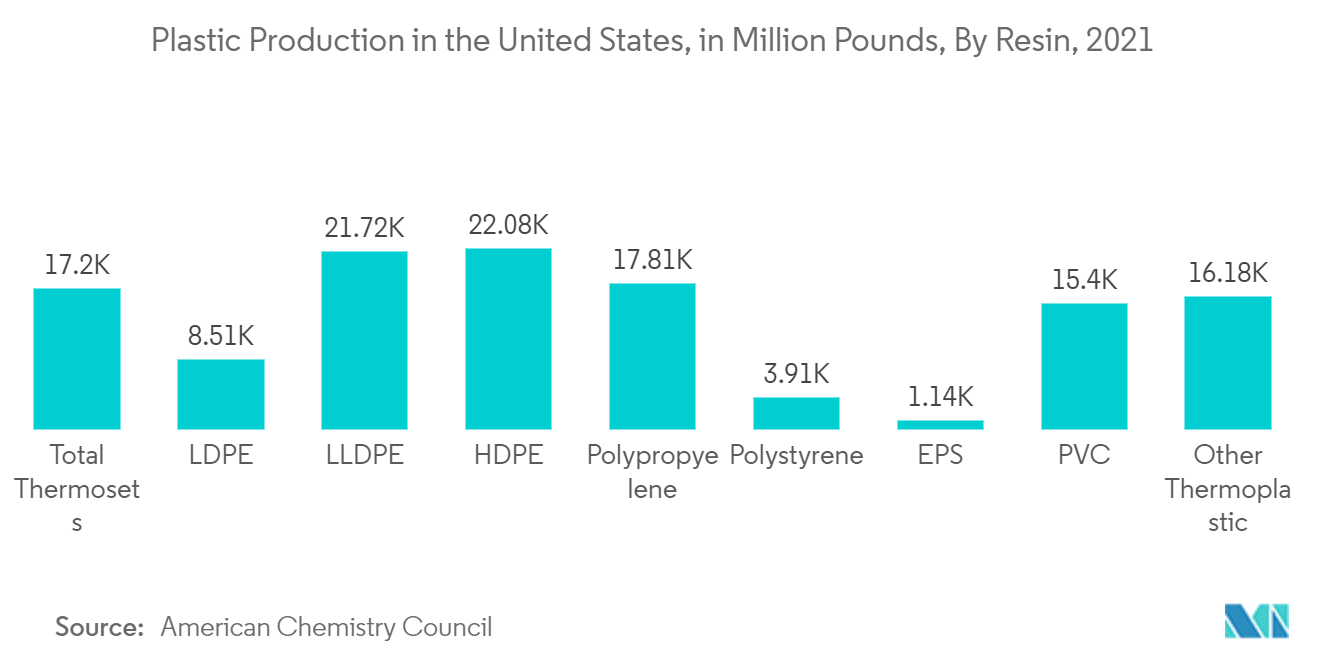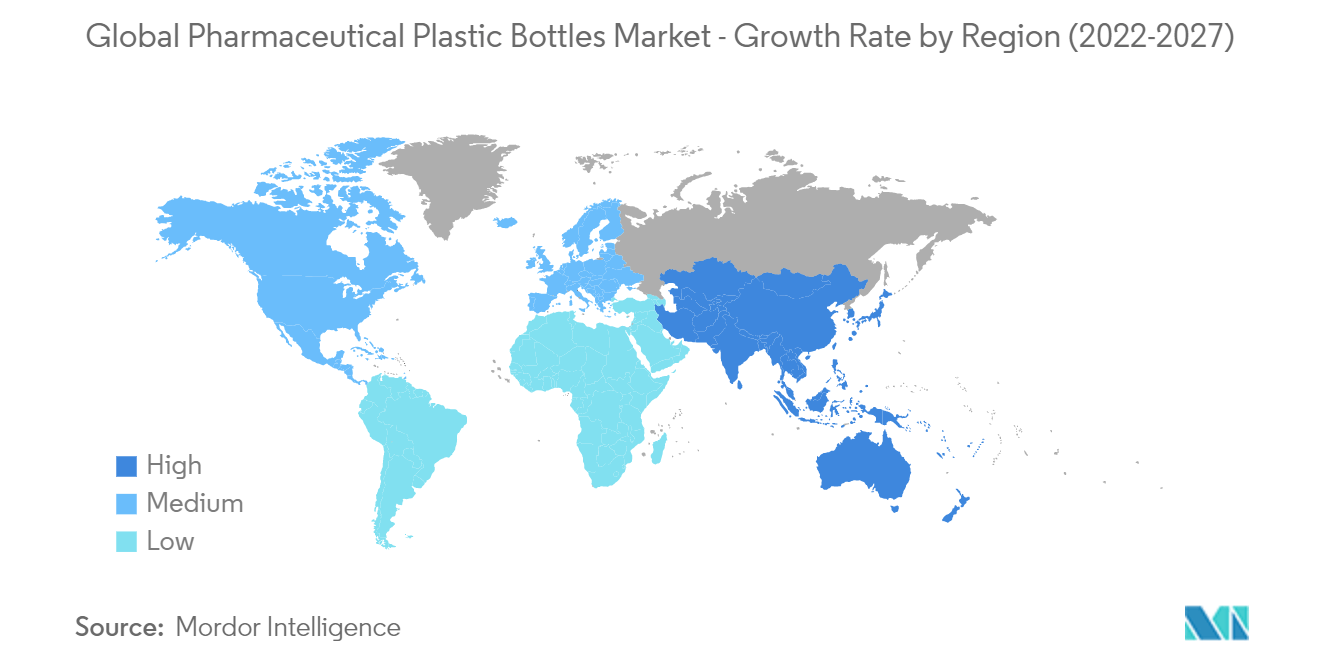Market Trends of Pharmaceutical Plastic Bottles Industry
This section covers the major market trends shaping the Pharmaceutical Plastic Bottles Market according to our research experts:
HDPE Segment to Report the Highest Growth Rate
- HDPE is used to manufacture various types of bottles, and among those, un-pigmented bottles are translucent, with excellent stiffness and barrier properties. The material has a pigmented variety, which can package light-sensitive drugs in the pharmaceutical industry. These materials are suited for packaging products with a short shelf life. According to American Chemical Council, in 2021, the United States produced 123.9 billion pounds of resins, in which thermoplastics accounted for roughly 86% of total production. High-density polyethylene (HDPE) was the most produced resin that year, with an output of 22 billion pounds.
- HDPE also has excellent chemical resistance, which presents it as a valuable material for packaging various chemicals and medicinal products. Pigmented HDPE bottles are witnessed to have improved stress crack resistance than un-pigmented HDPE material. The blow-molding application of HDPE makes it more durable and more versatile than PP and LDPE materials. It also has excellent resistance to most solvents and high tensile strength compared to other forms of polyethylene materials.
- HDPE is also primarily used for larger containers in the commercial sector as it has a high strength-to-weight ratio in common polymers and is less brittle than PP. It maintains a lightweight nature in molding, making it suitable for larger containers, like plastic canisters.
- Further, there have been various research and development activities by multiple players in the market. For instance, in April 2021, Advil maker GSK Consumer Healthcare (GSK) announced a commitment to reducing the plastic in more than 80 million Advil bottles by 20%, which will result in a reduction of nearly 500,000 pounds of plastic in the environment. By 2022, Advil is expected to reduce plastic in nearly all bottles available in stores and online, except the brand's Easy Open bottles. The new barrier resin technology reduces the amount of resin required to mold and craft the high-density polyethylene (HDPE) bottles while maintaining barrier protection properties.

North America Accounts for a Significant Market Share
- The US plastic bottles market is estimated to grow at a steady rate, owing to the constantly increasing consumption and industrial applications of plastic-made containers and bottles. According to the Plastics Industry Association (PLASTICS), the market demand for plastic bottles continues to expand in the United States.
- According to Pharmaceutical Commerce, in the United States, the pharmaceutical market is on the rise. By 2023, it is expected that Americans would spend USD 635 to USD 655 billion on pharmaceuticals. As a result, the United States will be the country with the greatest pharmaceutical spending.
- Moreover, according to Pharmaceutical Commerce, in the United States, the pharmaceutical market is on the rise. By 2023, it is expected that Americans will spend USD 635 to USD 655 billion on pharmaceuticals. As a result, it will almost certainly be the country with the most significant pharmaceutical spending.
- The plastic resin and products sector employs 93,000 people across 1,932 establishments. With usage in almost every modern product, plastic products are in demand in Canada in most sectors of the economy, with three categories packaging, construction, and automotive accounting for 69% of plastic end use.

